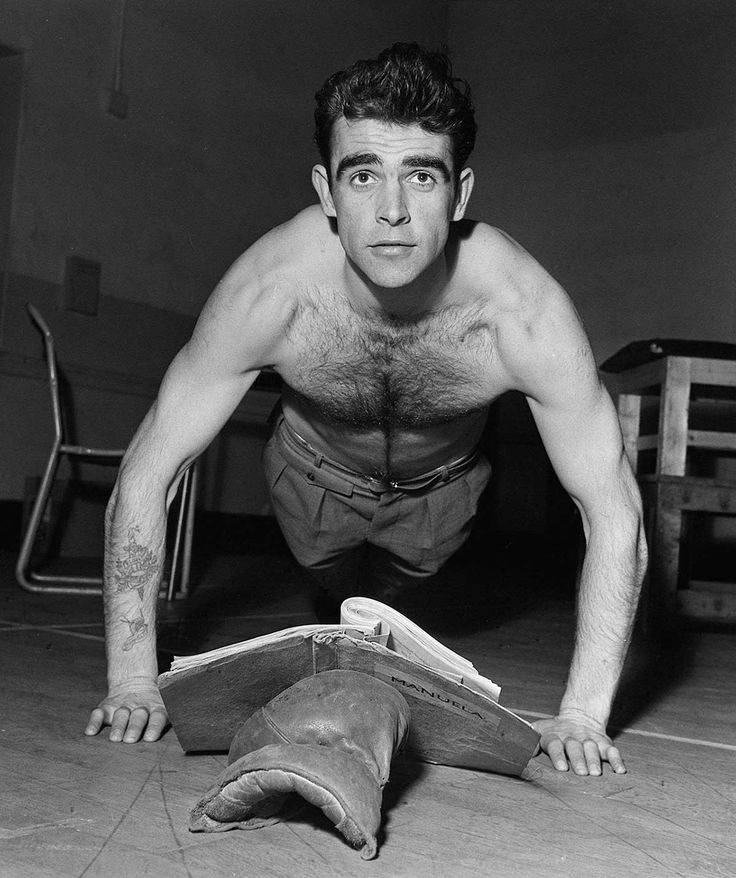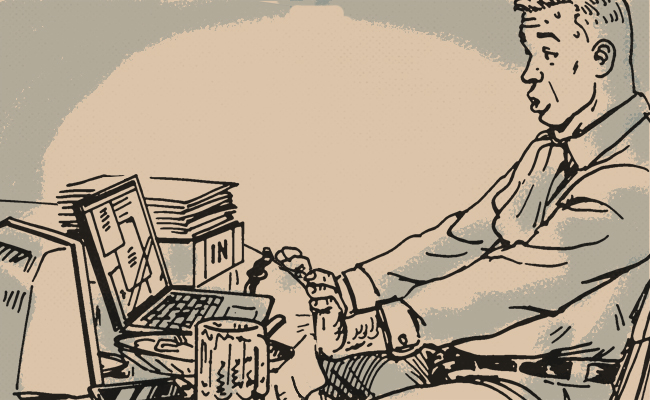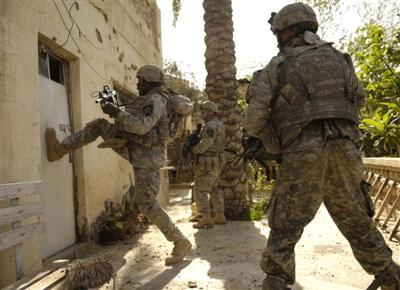Editor’s note: This is a guest article from Anthony Arvanitakis.
Push-ups: the manliest and most foundational strength exercise for the upper body. They’ve been turning boys into men since the dawn of physical fitness. I won’t bore you with their benefits (i.e., they require no equipment, they’re great for the whole upper body, etc.) — you already know all that! Rather, I’ll be answering the question, “Why is it that even though push-ups produce amazing results in the beginning, I stop seeing any serious progress after a few months?”
No more soreness, no new muscle-gains…you don’t really feel as if you’re getting or looking any stronger. All you get is an increase in repetitions, and that’s the problem! Most of you can do too many push-ups after a certain point.
But you might ask, “Isn’t that good? Isn’t doing more repetitions a sign of progress?”
Well, it depends. If you’re trying to break the Guinness push-up record, then maybe yes. But, if you want a stronger and more defined body, it’s definitely the wrong way to do them. Here’s the thing: if you can do more than 20 repetitions in any strength-related exercise, it simply means that its intensity is not challenging enough for you anymore. You’re not stimulating your muscles to any serious extent, and that’s why you’re not building any more muscle and strength. All you’re doing is building endurance at pushing yourself up and down off the floor.
Utilizing the Mind-to-Muscle Connection to Get More Out of Bodyweight Exercises
Instead of wiling away your time doing push-up after push-up with no real benefit, there is a muscle you can use to make this exercise as challenging as it felt when you were first doing it. Not only that, but by using this muscle, you’ll also be getting a chest pump like you’ve never felt before! Which muscle is it? The strongest one you possess: your mind! By learning to master the Mind-to-Muscle Connection, you’ll be able to increase muscle tension and do fewer, but more qualitative, repetitions. Below, I walk you through this connection, and then give tips on how to use it to maximize your push-ups.
External Cues vs. Internal Cues
External Cues
Most people focus on external strength-training cues. These are all those training characteristics that are a) measurable (i.e., reps, sets, resting times, etc.), and b) obvious to the naked eye (such as using good form while executing the exercise). External cues are very important. They should be the first thing one focuses on getting right as a beginner. But, once you’ve mastered them, and once the exercise stops being challenging, combining them with internal cues is key.
Internal Cues
The Mind-to-Muscle Connection (MMC) focuses on internal cues, which are the inner sensory feedback your body gives during your training. For example, one internal cue is the muscle burn you feel during the last reps of an exercise. Another one is the muscle pump you feel after a set. Internal cues can help you make the exercise more difficult — without having to add extra weight — allowing you to keep making progress in terms of strength and muscle development.
Another great benefit of utilizing internal cues is that you can do strength-building exercises without stressing your joints too much. This can be especially helpful if you’re over 30, when joints gradually become more sensitive and prone to injury.
To Build Strength, Choose Quality Over Quantity
Mind-to-Muscle techniques are not going to help you do more reps, or lift more weight in a strength-related exercise. On the contrary, they make each exercise more difficult to perform. It won’t be easy in the beginning — you’ll have to put your ego aside, since doing fewer reps feels, well, less manly. But doing fewer, more challenging reps, will build greater strength than doing a ton of easy reps. Strength and muscle development comes more from quality, than quantity. Plus, utilizing MMC cues will give you a greater feeling of control over your body, minimize injury, and help you experience your workouts at a deeper level. Once you learn to apply it to bodyweight exercises like push-ups, you won’t feel like doing them any other way again!
4 Ways to Apply the Mind-to-Muscle Connection to Push-ups
Below are the 4 most important internal cues for developing the perfect pushup. Experiment a little bit with all the tips today (doing one at a time), to get a general understanding of them. Tomorrow, begin practicing from tip #1, and then integrate it with one more new cue on each following day, until you’re doing all of them together.
MMC Tip #1: Activate Your Pecs
When it comes to sculpting your physique, the main reason you do push-ups is for building a rugged chest and strong arms. Yet, if you’re like most people, you mostly feel them in your shoulders and arms, right? So, let’s get started by first learning how to properly activate those pecs.
Your chest’s main function is arm adduction. What’s that? Try the following exercise and you’ll understand (you can also check it out in the video below):
- From a standing position, bring one arm in front of you (keep elbow straight) and place the fingertips of your opposite hand on your chest — just an inch or two above your nipple.
- Now start pushing with your arm against a wall and towards your body (i.e., push with your right arm towards the left).
You’re instantly going to feel your chest muscle contract. After practicing with the wall, try to learn how to “switch on” your pecs on cue. Then, work on keeping your chest activated during push-ups. Assume a push-up stance, and before initiating the movement, switch your chest on. Start doing push-ups and maintain this activation during the whole movement.
MMC Tip #2: Pre-Stretch the Muscle (Scapular Retraction and Depression)
One of the most common push-up mistakes is keeping your shoulders tight and shrugged. Besides causing issues such as shoulder nerve impingement and neck tension, this also shuts off the chest muscles. Not only does scapular retraction (squeezing your shoulder blades together) and depression (pulling them downwards) keep your shoulders in proper position, it also elongates the chest to its lengthened state. Why is that important? Because generating muscle tension from a lengthened state leads to greater hypertrophy (muscle growth).
MMC Tip #3: Lean Forward
Being an amputee makes bodyweight exercises more challenging for me (I have a below-the-knee prosthesis on my left leg as you can see in the video below). This is actually beneficial to me because it also helps me think in different and more creative ways. For example, in the first months after getting a prosthesis, I couldn’t place the weight of my lower body on my feet, so I started putting as much weight as possible on my arms. I soon realized that this is a huge game-changer for muscle activation during push-ups!
Normally in a push-up, you lift around 60% of your weight with the muscles of your upper body; the rest is being lifted by your legs and hips. But, by leaning a bit forward and placing as much weight as possible on your arms, you can lift up to 80%-90% of your weight. That’s a huge difference!
In terms of application, you just have to experiment in order to find the proper amount of forward-leaning that allows you to do a minimum of 5 quality, tough reps.
Important note: Overuse of hyperextension in the wrist during strength training can cause issues in the long-run. Leaning too much forward might expedite these issues. In general, I highly recommend that you learn how to do your push-ups on your knuckles (or use grips); not only is this a healthier way to do push-ups, but it also increases the range of motion on each rep (you can go deeper).
MMC Tip #4: Don’t Lock on Top
There’s bad cheating and there’s good cheating when it comes to strength training. For example, not going all the way down during a push-up is bad cheating. But, keeping your elbows a tiny bit bent at the top of each rep can help make the exercise more difficult (good cheating). Why is that? Straightening your elbows at the top position allows you to rest; by keeping the elbows slightly bent at the top, you maintain tension at all times!
So when you’re doing a set of push-ups, instead of resting on your wrists by locking out your elbows at the top position, keep them slightly bent. A few degrees should do it (10°-15°) — just enough to maintain the tension on your chest.
Conclusion
There is no need to beat up your joints and tendons by doing useless reps with momentum and bad form. Always remember: when it comes to building strength, muscle tension trumps meaningless reps. Learn to leave your ego aside and focus on proper technique. Start by mastering basic (external) technique, and after that start focusing on internal cues. Try to be mindful and in the zone. As I like to say, an unfocused workout, is half a workout!
______________
Anthony Arvanitakis is a motivational bodyweight Strength Coach and author of bestsellers such as How to Sculpt a Greek God Marble Chest with Push-Ups. You can find more about him at his website, HomemadeMuscle.com (where you can also download his Free Beginner’s Guide).








